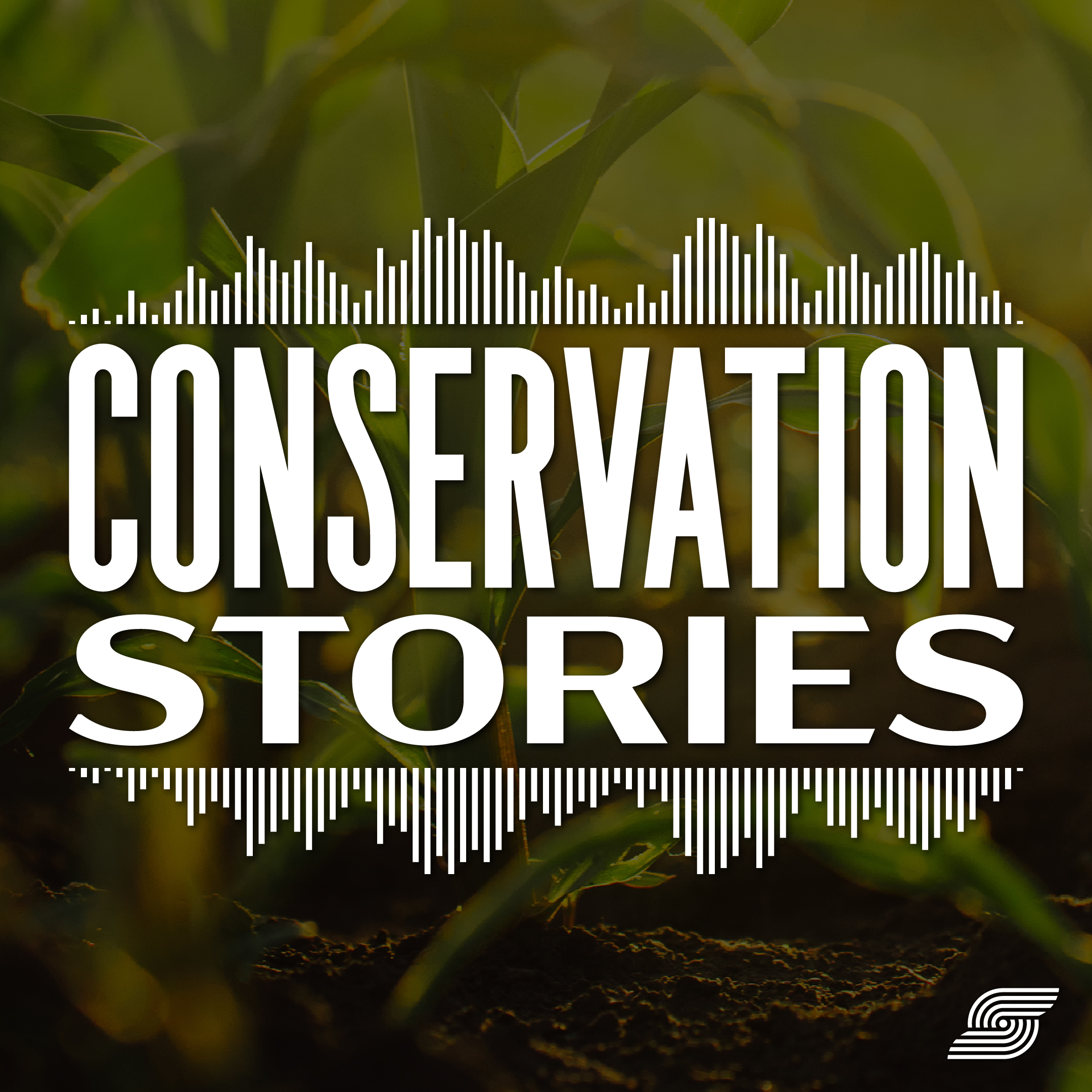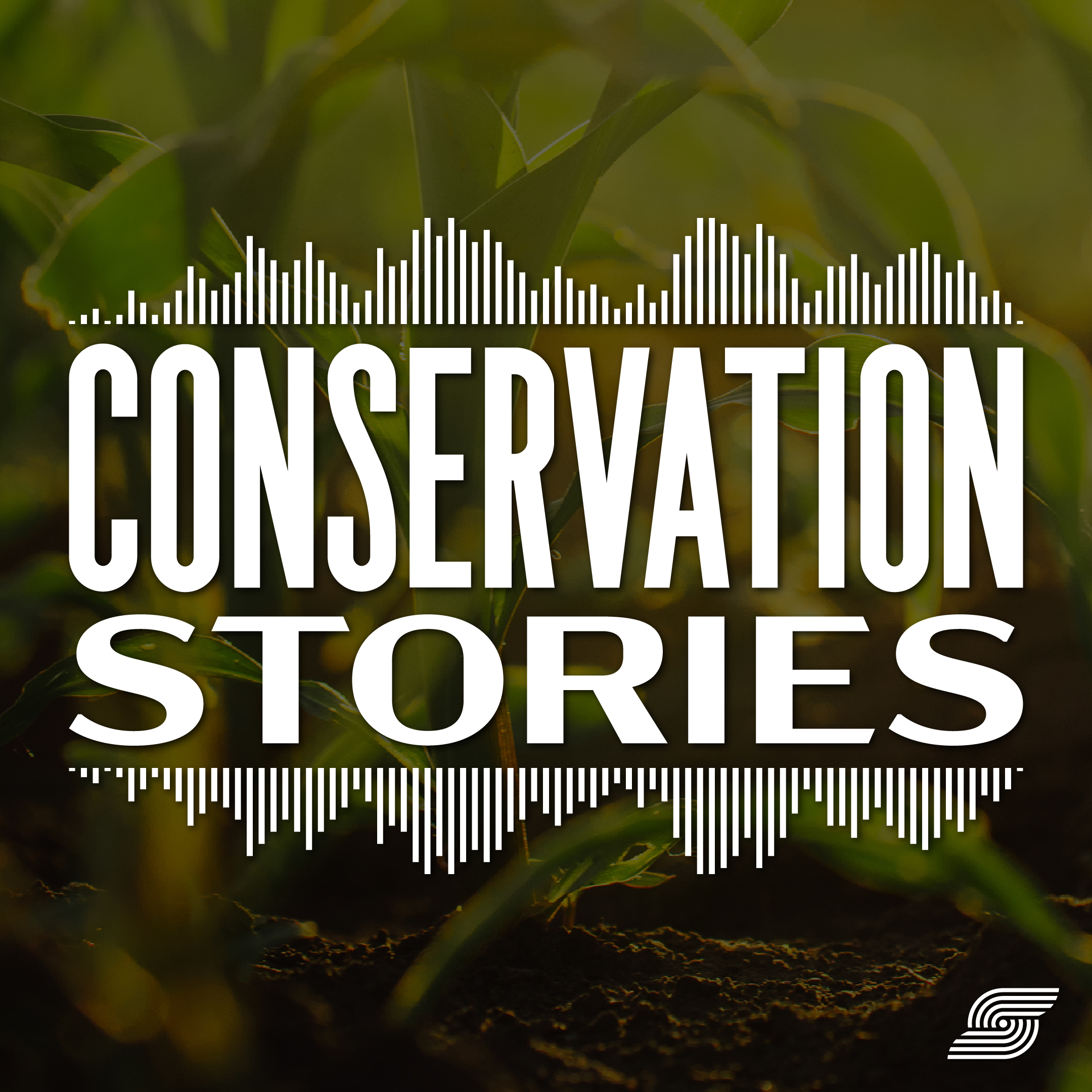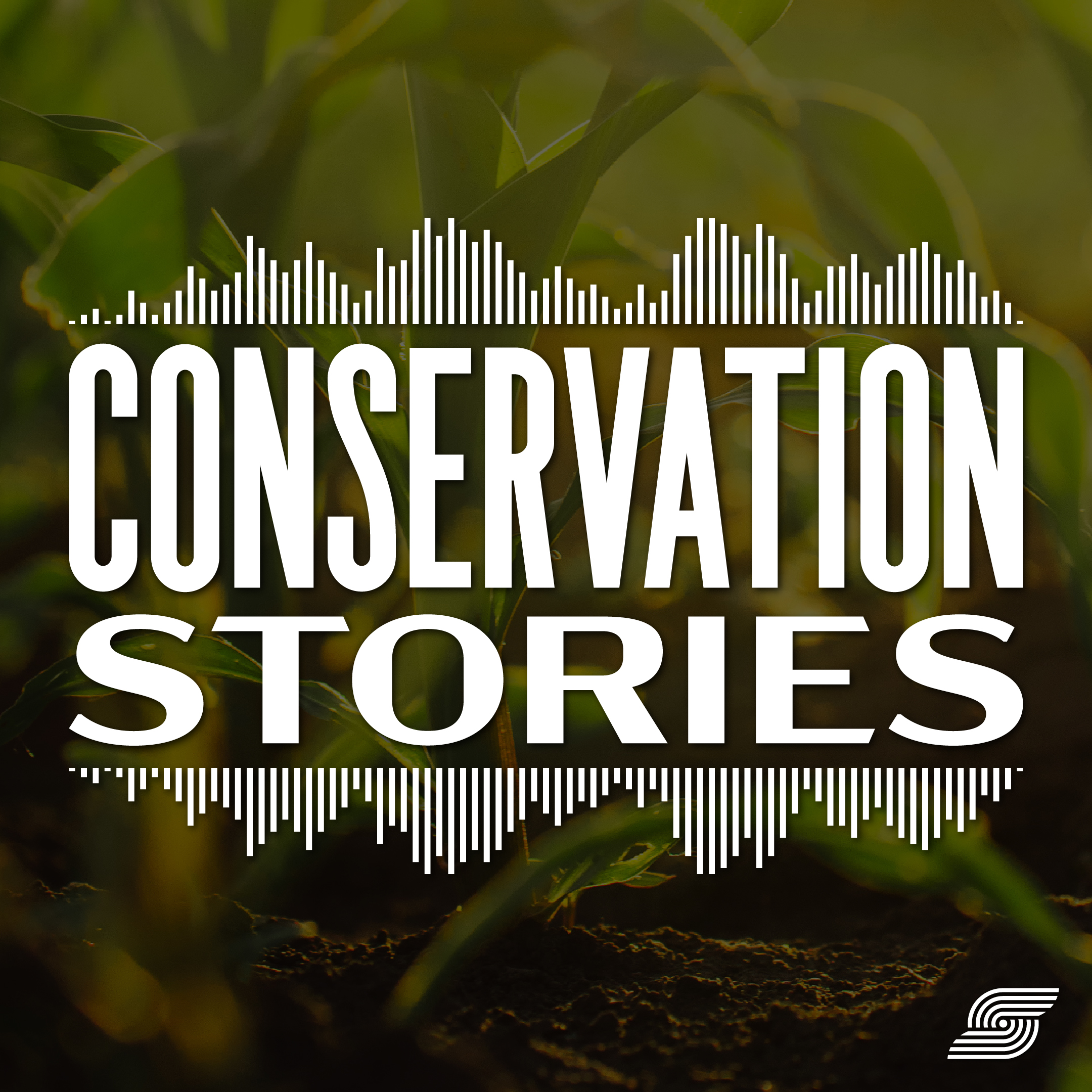Episode Transcript
[00:00:11] Speaker A: Hello, friends. Welcome back to another episode of Conservation Stories. In our last episode, we had with us from Ducks Unlimited, Stephen Rockwood. And we talked all about playas and that was a wonderful educational time, talking about easements. And I asked him to hang around and talk some about the Climate Smart Grant that Ducks Unlimited is partnering with, with the rice growers. And I'm well aware that we have no rice in this area. But what I thought was interesting as we were talking about the Climate Smart Grant was the amount of participation and the farmers involvement and the way it was set up. And I would really like for you to explain some of that to us. So I know you guys tell us who our partners and which one of the grants that you got in the funding.
[00:01:01] Speaker B: Okay. So this was, I wasn't involved in the actual writing of the grant itself. I'm just on the opposite end. I'm on the implementation side. And so this was a multistate grant. It was actually written. And co sponsors on this are USA Rice. And Ducks Unlimited was a, was a sponsor with USA Rice on it.
[00:01:23] Speaker A: Okay.
[00:01:24] Speaker B: So all of it falls on the heels of USA Rice. They're doing the implementation of this one.
But prior to that, we've, we've did a number of, of grants with our rice producers. Just Ducks Unlimited alone, but we partnered with USA Rice on this particular Climate Smart Grant. And this was an $80 million grant. And this is being distributed amongst the five top rice producing states. And it was California, Arkansas, Louisiana, Missouri and Texas.
[00:01:58] Speaker A: Okay.
[00:01:59] Speaker B: And again, I wasn't involved in putting it together, just on the implementation side of things.
Let's see. So how we implemented that particular program here in Texas is that we worked with our rice producers and we got a team of rice producers together to inform them of this grant.
And we came up with a plan with those producers and said, this is how we intend to implement this thing. And here are some of the conservation practices that are critical that fall within the realm of what we call Climate Smart Ag.
[00:02:39] Speaker A: Right.
[00:02:39] Speaker B: As it relates to growing rice, which.
[00:02:42] Speaker A: Is, by the way, just a new name for all the things that everyone is well aware of at the NRCS office.
[00:02:47] Speaker B: So it's really, we left a lot of it up to the discretion of the rice producers themselves to really regulate themselves on how they would like this thing to be implemented in the state of Texas. And so they set limits on how much each producer could receive and under what conditions they would receive those funds based on the options of Climate Smart practices that they had available to them. So once we had that established. And I think under this particular.
Don't quote my numbers, but I believe our cap limit under this program that each producer could receive was no more than $60,000.
[00:03:26] Speaker A: And the farmers are the ones that set the cap on that. Farmers set the cap, to me, is so fascinating.
[00:03:33] Speaker B: So we have this thing that the producers would.
And we interchange farmers and producers.
You know, you have to be. You had to have been growing rice.
You know, we can't. In some situations in Texas, in the Texas soils, there are. There are areas where you cannot grow rice every year. You have to let it rest or you have to rotate it in.
[00:03:59] Speaker A: Okay.
[00:04:00] Speaker B: But under this scenario, we set limitations on how. How much rice have you been growing? And so there's. There's some. There's some minimum requirements that you. That a producer must follow or to be considered for the program. And once you reach that, then we. Then we put out a notice and we started taking applications.
And it turned out that we had over 60 producers apply.
And unfortunately, due to our limit, the Texas. The amount of funds that Texas received was.
I want to say it was right around 3.1 million, but don't quote me on that. But we had enough funding.
Knowing that there was a $60,000 cap, we had enough funding to take on about 30 producers.
[00:04:51] Speaker A: Okay.
[00:04:51] Speaker B: Do you have any.
[00:04:53] Speaker A: How many rice producers there are in Texas?
[00:04:55] Speaker B: Oh, wow. I know you're gonna hit me. No, I don't.
[00:04:58] Speaker A: I don't know either.
[00:04:58] Speaker B: I can tell you that, you know, all things being water, we talked about the playas and the importance of how the playas are for Ogallala recharge. And I can tell you that, you know, when Texas had the big drought back in 2009, 10 11E probably had close to 600,000 acres of rice.
Now we're probably down to 150,000 acres of rice grown in Texas.
I can tell you we had 61 applicants apply for the climate Smart agricultural grant, but I don't.
[00:05:34] Speaker A: Well, it looks like that. Just under 145 acres of rice. 145,000 acres of rice last year. So. And it says it was pretty close. Yeah.
[00:05:44] Speaker B: 250.
[00:05:46] Speaker A: Yeah. 200 and 200 something farms. But, you know, that's probably farm numbers.
[00:05:51] Speaker B: Yeah.
[00:05:52] Speaker A: Would be my guess.
[00:05:53] Speaker B: Oh, yeah. So most of the multi. Most of these guys have multiple farmers, multiple fields, multiple tracks.
[00:06:00] Speaker A: I mean, it sounds like to me you'd had pretty good participation because you had to turn away half the people.
[00:06:05] Speaker B: We did.
[00:06:06] Speaker A: That's. Yeah, that's hard.
[00:06:07] Speaker B: And it is hard and the cap was set by the, by the landowners and it was relatively small, small cap compared to, I think Louisiana's cap was 90,000. And I don't, I don't recall off top of my head what Arkansas or some of the other states did they.
[00:06:25] Speaker A: Set it up the same way in the, in those other states where they included the farmers in that, the development of how it would roll out.
[00:06:32] Speaker B: Right? Yep, yep. The, each, each state set up their own team of, they got a core team of producers together to help them with the administration and the setup. Obviously, I mean, it's hard to implement a program without their input. I mean they are, we are going to be relying on them and the data that we get off of this is going to help us with our climate smart technology.
[00:06:56] Speaker A: Right. And you guys, you guys are really looking, focusing at methane and carbon. Yeah, that kind of stuff.
[00:07:04] Speaker B: Yeah, it's really heavy focuses. Right. As you said, the carbon sequestration. But obviously methane production, minimizing that. And we, based on different states and different growing technologies, we in Texas, we know that most of that methane production occurs during the tillering stage of rice production. So when you plant rice, plant a seed in or, and once that rice starts producing multiple tillers, this is maybe I'm not a rice producer, but I'm going to say maybe after about the third week of planting that rice, when the rice goes in the tillering stage, we know that that's when methane production occurs. And it's really critical to not have water on the rice during that time period. You want to minimize the methane gas emissions or methane production during that time. So one of the climate smart agricultural techniques is what we call alternate wetting and drying when growing rice. So you plant your rice, you do an initial flood on that rice and then you let that dry out. You let the rice bed dry out during that tillering stage. And once it gets through the tillering stage, then you can put your flood back on it. And that in theory would cut back about 50% of the methane production.
[00:08:40] Speaker A: Oh, wow. But you're testing to make sure to see how much it is.
[00:08:43] Speaker B: Yeah. So as a part of theory anymore? Yeah, as part of an agreement under this climate smart agricultural technique, when the producers sign up, they're also agreeing to the fact that we have monitoring that's going to be collecting data. Yeah, collecting data all during this process. And so, and that's part of the agreement.
[00:09:03] Speaker A: So are you using, are you working with a particular company that has technology that's, that's measuring.
[00:09:09] Speaker B: So some of this is going to be collected through a private company that USA Rice is coordinating with. And I don't, I don't know who the name of the company is, who's handling some of that. And some of that is we're collecting the information from the producers. So we, USA Rice is going to have this app set up that a producer can go in and input their data, like how much rice was planted, fertilizer used, nitrogen. All that information is all going to be put into the system at where do they hold their water levels and things of that nature?
Some of the monitoring stations is what's going to be contracted out with and so that company.
[00:09:49] Speaker A: Can we all be water monitoring water use?
[00:09:52] Speaker B: Oh, yeah, yeah. That's, that's all part of it.
[00:10:13] Speaker A: Out here on the Texas plains, water is everything. And there's a resource that's as vital as it is fragile. Our Playa lakes. These lakes are nature's reservoir, catching rainwater to recharge our aquifer and provide lifelines for wildlife. But now they need our help. In collaboration with the Texas Ply Lakes Conservation Initiative and the Cargill Global Water Challenge, Sarah has started the Our Legacy is Tomorrow's Water initiative to inspire and work with landowners to restore and protect our Playa lakes. Each Playa we save helps secure a sustainable water future for the generations that will be coming after us. Whether it's improving soil health, restoring habitats, or recharging groundwater, we are committed to making a difference. Together, we can build a legacy that we can all be proud of. To learn how you can join in, visit the Playa Lakes Restoration Initiative page on the SARAH website. Let's keep Texas water flowing strong for the future. Visit sarah-conservation.com.
[00:11:24] Speaker B: So in addition to the alternate wetting and drying techniques that.
So we have this suite of conservation practices that they can use. Yeah. And so and we broke it down into primary and secondary practices where to enroll into the program. You know, you do have to do alternate wetting and drying because that is the number one thing that's going to cut out on the. And if you can't agree to that, then you're not eligible for the program. But secondary to that would be climate smart practices that relate to fertilizer management and soil nutrition. Those are two biggies. And the third aspect of it is also providing habitat for wildlife. And in this case, and because most of our rice producers have water resources capabilities and they are harvesting the rice right about towards the end of the migratory season, they can get a secondary income by flooding those rice fields and Selling are leasing those lands out for waterfowl hunting.
[00:12:32] Speaker A: Interesting.
[00:12:32] Speaker B: Yeah. Okay, so three components of it. You have. The primary is alternate wetting and drying and then your secondary component being soil and nutritional health. And the third is wildlife benefits.
[00:12:45] Speaker A: And they're getting paid, they're stacking those payments. So that's correct for the primary, the secondary and then that.
[00:12:51] Speaker B: Yeah, yeah, that's right. That's right.
[00:12:53] Speaker A: Very interesting.
[00:12:54] Speaker B: So it's really cool. So, you know, when you think about soil nutrition and soil health, we've come such technology has come such a long way and deciding and when and where. I mean, it used to be you're going to apply so much fertilizer at so many pounds per acre for each of their tracks or their field numbers. But nowadays with climate smart technology, and they have folks that would come out and do subsampling within a field and they'll record and digitize what sections of the field need what percentage of fertilizer and nozzles that are turning on and off as they're running their tractors.
[00:13:33] Speaker A: Very precision. Yeah. So yeah, when we were in Poland, we saw a planner for strip till and it's, it's really can replace several different, you know, pieces of equipment. But it has a sensor that first senses soil moisture in front of.
[00:13:53] Speaker B: Yeah.
[00:13:54] Speaker A: Every planter, you know, and then, then it has another sensor that senses compaction so that each one of those rows where they're planting that seed is going at the exact right place in the exact right depth.
[00:14:13] Speaker B: Oh, wow, that's cool. When I was in Florida, about the time I was leaving Florida, we talk about center pivot irrigation and what that's doing. A big issue in Florida was the Apalachicola river. And there's lots of intensive agricultural farming activity in Florida. I mean in Georgia, North Georgia. And because of like we see here, you know, there's a lot of, lot of center pivot irrigation and that's pulling water resources out and it's drastically affecting the flows of freshwater through Apalachicola Bay. And it's really interesting when you think about how critical these watersheds are. Apalachicola Bay you think is so dependent on that freshwater inflows. Because if you, if you decrease the freshwater inflows and guess what happens? The salinity in those bays slightly increases. And when that salinity increases, it has a huge impact on the ecosystem of those bays and it affects oyster population. You get oyster drills and all these little critters that come in there and infect the oysters and the saltier More salinity there is, the less, the less oyster production we see in there. And it. So center pivot irrigation was a big deal and Water Resources was a big deal. Appalachicola and they started developing these sensors that they can put on the center pivot that would actually track and monitor storm frontage and know when to turn the water on and when to turn it off based on sensors in the ground like soil moisture and based on whether or not systems are coming in are going to be producing rainfall. You know, it's really fantastic stuff to see.
[00:15:52] Speaker A: Well, Stephen, I thank you again for joining us for another little recording about your Climate Smart Grant. I. For our listeners, we have already released a conversation with Rexy Harkis about the Texas A and M Climate Smart Grant. And so it'd be interesting for people to listen to both of these podcasts and kind of compare the two different programs and, you know, see what they're, how they're like and how they're different.
[00:16:20] Speaker B: So, yeah, I don't, I don't know much about their grant. I've obviously, I know that there's. They do have a Climate Smart Agricultural grant out there that they're working with producers across the state. So I don't know if it's. It's all producers or if it's there.
[00:16:34] Speaker A: Or I think so. I think pretty much anybody.
[00:16:36] Speaker B: Anything.
[00:16:38] Speaker A: Yeah. Can kind of participate this. I know especially here that they've, you know, trying to get folks to put in those applications. So I'm pretty sure they have their own website. You can go back for the listeners, you can go back to that Rexy Hargis episode and we can put a link of that in the show notes and there, there'll be a link to her website as well.
[00:16:58] Speaker B: Yeah. And if anybody has any specific questions I can. Regarding the Climate Smart Agricultural Grant, obviously you can reach out to me. And we have other folks with USA Rice who we're working with on that program.
[00:17:11] Speaker A: So if anybody down there where there's some water.
[00:17:14] Speaker B: Yeah. Have them. Here's our podcast Contact Reach Out.
[00:17:17] Speaker A: It will put it in the show notes and we'll put all your contact there. And thank you again.
[00:17:21] Speaker B: You bet.
[00:17:22] Speaker A: Glad to be here. Thank you listeners, for joining us again for another episode of Conservation Stories. This is your host, Hilary Timmons Sims. And I'm always glad to have guests here to bring you some really interesting and fascinating topics.
Ra.


